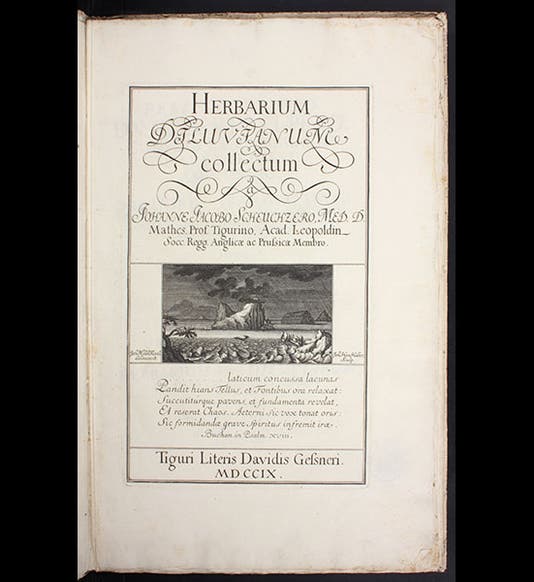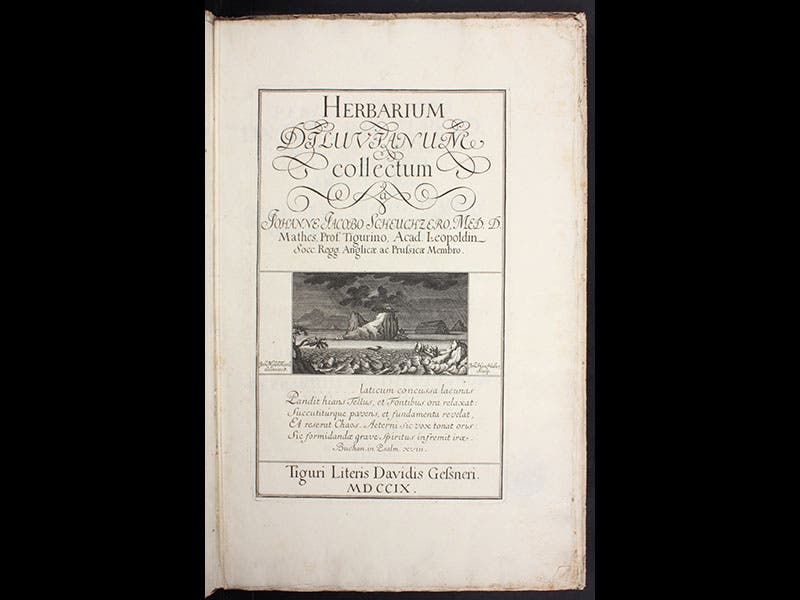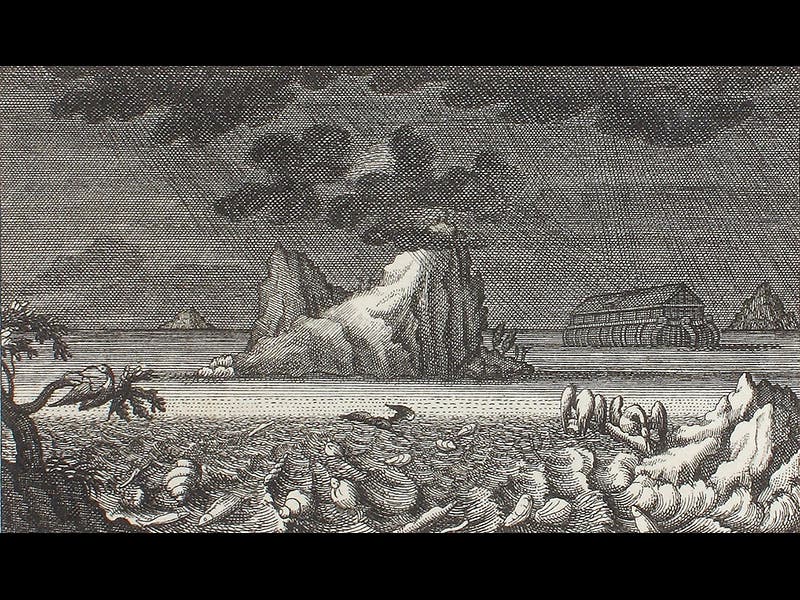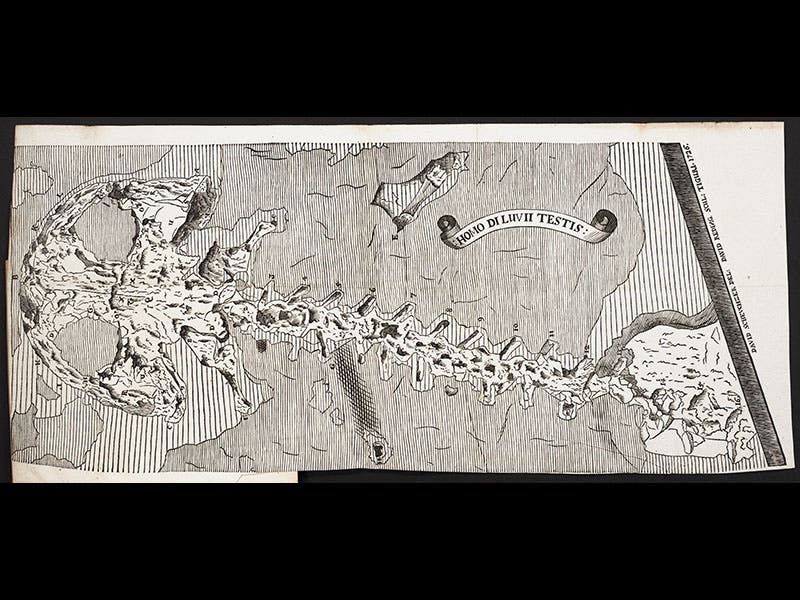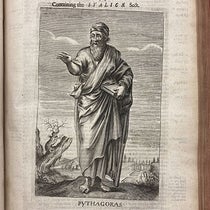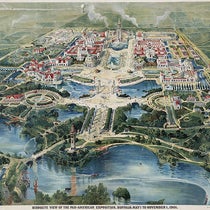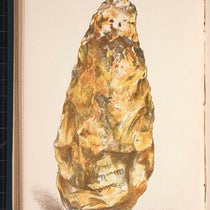Scientist of the Day - Johann Jakob Scheuchzer
Johann Jakob Scheuchzer, a Swiss paleontologist and geologist, was born Aug. 2, 1672. Scheuchzer was an avid student of the Alps and an inveterate collector of fossils. Earlier students of fossils, such as his countryman and Zurich city-mate Konrad Gesner, had collected mostly fossilized shells like ammonites and belemnites, but Scheuchzer filled his museum with all manner of fishes and ferns in fossilized form. He illustrated these with a variety of publications, including one delightfully titled: Piscium querelae et vindiciae (The Complaint and Verdict of the Fishes, 1708); the fishes were apparently were not too pleased at their current condition. The third and fourth images above are from the Fishes Complaint.
Scheuchzer believed, following the English geologist John Woodward, that all fossils--plant and animal—were deposited in the aftermath of the Great Flood. His book on fossil plants, Herbarium diluvianum (1709; first image), not only has a revealing title (Plants of the Flood), but it begins with a title-page vignette demonstrating the role of the Flood in creating fossils (second image). Geologists who attributed a major geological role to the Great Flood were later called diluvialists.
It is not surprising then that Scheuchzer was delighted when he found what he thought was the fossil of a human drowned in the Flood. He called his fossil "Homo diluvii testis" (“the human witness of the Flood”) and published a pamphlet with that title, containing a woodcut of the fossil at full size. It was not until 1808 that the "human witness" was shown to be the remains of an extinct giant salamander. In the image above (fifth image), we have rotated the woodcut 90 degrees to make it larger and provide more detail. We displayed this work in our 2009 exhibition, The Grandeur of Life.
The Library has digitized four of Scheuchzer's works, including the Homo diluvii testis and Piscium querelae. If you go to the "External links" section of the Wikipedia article on Scheuchzer, you will find links to all four of our digitizations.
Dr. William B. Ashworth, Jr., Consultant for the History of Science, Linda Hall Library and Associate Professor, Department of History, University of Missouri-Kansas City. Comments or corrections are welcome; please direct to ashworthw@umkc.edu.

